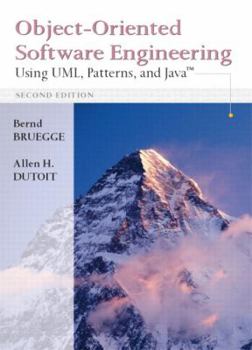Object-Oriented Software Engineering: Using UML, Patterns and Java
Select Format
Select Condition 
Book Overview
This widely used book teaches practical object-oriented software engineering with the key real world tools UML, design patterns and Java. This step-by-step approach allows the reader to address... This description may be from another edition of this product.
Format:Hardcover
Language:English
ISBN:0130471100
ISBN13:9780130471109
Release Date:January 2003
Publisher:Prentice Hall
Length:762 Pages
Weight:2.85 lbs.
Dimensions:1.4" x 7.4" x 9.3"












